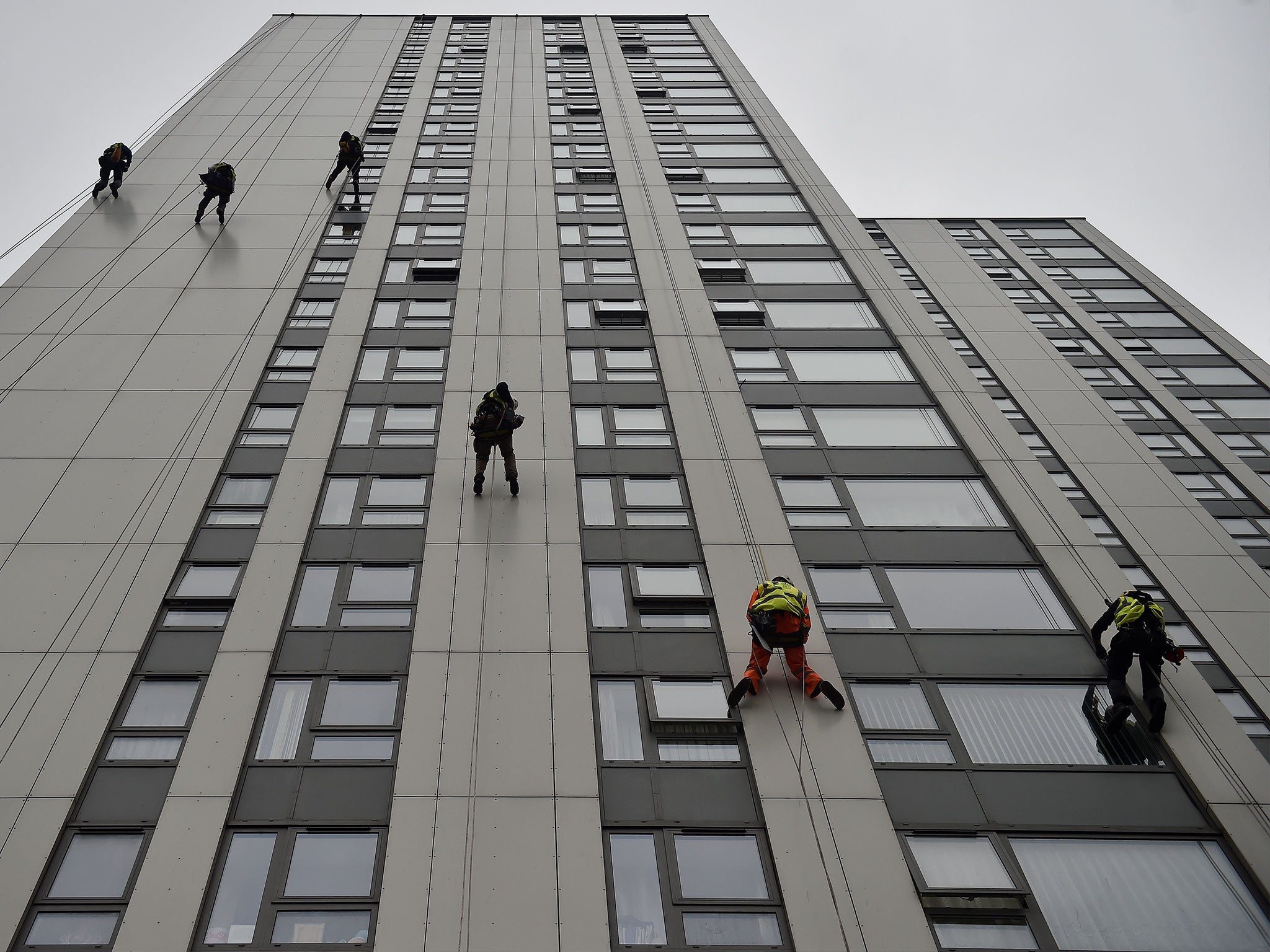More than 1,000 'suspect' cladding samples refused testing by government, says Labour
'Conservative dogma of hands-off delaying action to deal with national disaster,' says shadow housing secretary

Your support helps us to tell the story
From reproductive rights to climate change to Big Tech, The Independent is on the ground when the story is developing. Whether it's investigating the financials of Elon Musk's pro-Trump PAC or producing our latest documentary, 'The A Word', which shines a light on the American women fighting for reproductive rights, we know how important it is to parse out the facts from the messaging.
At such a critical moment in US history, we need reporters on the ground. Your donation allows us to keep sending journalists to speak to both sides of the story.
The Independent is trusted by Americans across the entire political spectrum. And unlike many other quality news outlets, we choose not to lock Americans out of our reporting and analysis with paywalls. We believe quality journalism should be available to everyone, paid for by those who can afford it.
Your support makes all the difference.More than 1,000 “suspect” cladding samples taken from buildings across the UK have been refused testing since the Grenfell Tower fire, Labour has claimed.
Demanding a reason why 1,319 specimens were turned down, shadow housing secretary John Healey criticised the government for taking too long to respond to the fire-safety problems that emerged in the wake of the Grenfell disaster.
Speaking in the Commons, Mr Healey said: “Since Grenfell, 1,319 suspect cladding samples sent to the government testing centre have been refused testing, as ministers say they’ll only test the aluminium composite material (ACM): why?”
ACM cladding, which has a combustible polyethylene core, has been blamed for helping to spread the fire between the apartments in the 24-storey highrise in June last year. The Ministry of Housing, Communities and Local Government has focussed its fire safety tests on this material.
Yet fire safety experts have warned many other kinds of cladding pose a risk including the CEP and Carea systems. These types of cladding are not made of aluminium, but have a near identical construction to the Reynobond ACM panels used on Grenfell Tower.
Housing secretary James Brokenshire told MPs he would “look into” the matter, adding: “The BRE (Building Research Establishment) focus has obviously been on the ACM material that has been at the forefront of concerns to ensure that, both in the public sector and private sector, that can be tested to ensure that where there has been cladding that does not meet the necessary standards, that that is dealt with and the actual remediation steps can take place.”
Mr Healey responded: “That simply isn’t good enough from the secretary of state. The BRE does what ministers tell them to do and we know that other cladding and insulation materials have been found unsafe.
“We know the Hackitt review has confirmed that the whole bundling regulation system from end to end is, she says, not fit for purpose.
“So since Grenfell, minsters have been too slow to take responsibility, too slow to act and this Conservative dogma of hands off is delaying the Government action necessary to deal with this national disaster.”
Figures published by the government last month revealed 1,988 cladding samples had been received, of which only 657 had been tested.
Mr Brokenshire told MPs he “firmly recognised” the concerns and said that the government had committed an extra £1m to help local authorities identify at-risk sites.
The government has also said it would foot an estimated £400m bill to remove and replace dangerous cladding from social housing buildings, although it emerged the funds were to come from the budget for affordable homes, meaning fewer cut-price houses would be built over coming years.
A review into housing safety by Dame Judith Hackitt commissioned in the aftermath of the blaze in north Kensington found the building regulation system was “not fit for purpose” and open to abuse by those trying to save money.
The inquiry into the Grenfell Tower fire on Monday heard how a catalogue of fire safety errors were introduced to the tower block over the decade before it was consumed by flames.
Dr Barbara Lane, a chartered fire safety engineer who analysed the fire for Sir Martin Moore-Bick’s investigation, said fire lifts and fire mains within the building were not suitable.
In a number of places on the building, she found flammable insulation appearing in places not specified in the designs.
Join our commenting forum
Join thought-provoking conversations, follow other Independent readers and see their replies
Comments